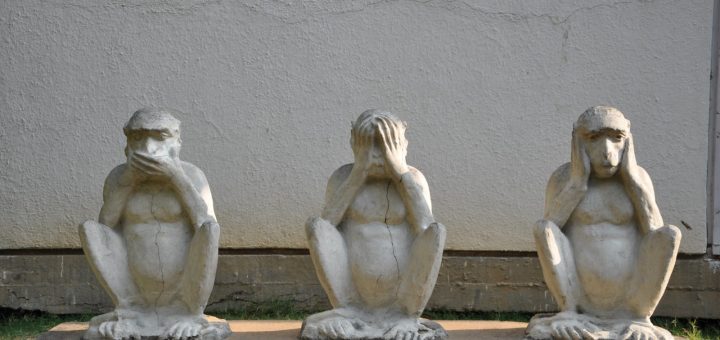A Duty to Tolerate? SCC on Free Expression in Ward v Quebec

No person has the right not to be offended. Every person, however, has the right to the safeguard of their dignity—at least in Quebec. How this right balances against another’s right to free expression was at issue in Ward v. Quebec (Commission des droits de la personne et des droits de la jeunesse), 2021 SCC 43 [“Ward”].
Ward alters the framework for a discrimination claim under the Charter of Human Rights and Freedoms, CQLR c. C-12 [“Quebec Charter”] in the unique situation where a plaintiff and defendant each claim the protection of a Quebec Charter right. The decision also made strides in defining dignity and free expression, finessed the discrimination framework, and set out a new test for the balancing of competing rights in a discrimination claim.
I could focus this post on the majority and dissent’s differing takes on discrimination. Instead, I will summarize Ward and how Quebec’s discrimination framework is changed, and then turn to what may be a dangerous step in defining free expression: the recognition of “a duty to tolerate what other people say.”
History of the Dispute
Facts
Mike Ward, the appellant, is a comedian who aims, beyond laughter, to comment on societal taboos. From 2010 to 2013, Ward performed a show titled “Mike Ward s’Expose.” This included a segment mocking the “sacred cows” of Quebec: people the public cannot laugh at because they are famous, rich, or weak.
Jérémy Gabriel, a complainant, was one such “sacred cow” targeted by Ward in his show. Gabriel suffers from Treachers-Collins Syndrome and is deaf. Despite this disability, which is also visible (he has an osseointegrated hearing aid), Gabriel pursued a successful international singing career. At the time of Ward’s comments, Gabriel was in his early teens (a fact much cited by the dissent but unmentioned by the majority).
Not all of Ward’s comments related to Gabriel’s disability, but most did. Ward referred to him as [translation] “the kid with the subwoofer” on his head, whose affliction is only that he is [translation] “ugly.” He joked that Gabriel’s mouth does not close (a side effect of his Treacher-Collins syndrome). Gabriel’s peers were inspired by Ward’s comments and bullied him in similar fashion, sometimes repeating the same “jokes.”
The Commission des droits de la personne et des jeunesse brought an action to the Tribunal des droits de la personne on behalf of Gabriel and his parents. Gabriel claimed that Ward had discriminated against him under section 10 of the Quebec Charter and violated his section 4 right to dignity. Ward claimed his speech was protected by the section 3 right to free expression.
Legal Framework
The Tribunal applied the framework for prima facie discrimination from Quebec (Commission des droits de la personne et des droits de la jeunesse) v. Bombardier Inc. (Bombardier Aerospace Training Center), 2015 SCC 39 [“Bombardier”] (para 35):
- a ‘distinction, exclusion or preference’,
- based on one of the prohibited grounds, and
- which ‘has the effect of nullifying or impairing’ the right to full and equal recognition and exercise of a human right or freedom.”
Lower Courts
The Tribunal considered Ward’s supposed section 3 protection to be a justification and not part of the prima facie discrimination inquiry. They found that Ward had exceeded the limits of free expression and discriminated against Gabriel.
A majority of the Quebec Court of Appeal upheld the Tribunal’s decision. Justice Savard, in dissent, said that Ward’s freedom of expression should be balanced against Gabriel’s right to dignity at the third stage of the Bombardier test. She found that outweighed Gabriel’s right to dignity and as a result there was no discrimination.
Supreme Court of Canada
The Supreme Court of Canada (the “Court”) split 5-4. The majority found that, since Ward selected Gabriel as a target because of his celebrity status and not because of his disability, he did not differentiate Gabriel based on a prohibited ground (Ward, para 91). Thus, there was no discrimination.
Writing for the majority, Chief Justice Wagner and Justice Coté agreed with Justice Savard that the competing rights must be balanced at the third stage of the Bombardier test. They reworked the discrimination framework accordingly and applied it to the facts of this case. Under the new framework, the majority still would not have found discrimination. The Court allowed Ward’s appeal.
Justices Abella and Kasirer, dissenting, took particular notice of Gabriel’s age, finding that “the widely disseminated taunting of a 10 to 13 year-old disabled child that plays on dehumanizing notions associated with his disability clearly meets [the] threshold” of discrimination (Ward, para 119). They focus on the impact of Ward’s conduct and not his intention. Their approach is in line with the Court’s prior discrimination jurisprudence.
Discrimination Framework after Ward
Where the defendant in a discrimination claim under the Quebec Charter also asserts a right under sections 1–9, the rights asserted must be balanced before a finding of discrimination can be made. The defendant’s right operates not as a justification for discrimination but as a limit on the right the plaintiff claims that they infringed. To determine if one prevails over the other, the two claimed rights must be assessed against section 9.1.
The Court laid out the elements for a discrimination claim under the Quebec Charter:
- A “distinction, exclusion or preference”;
- based on one of the grounds listed in s. 10;
- that has the effect of nullifying or impairing the equal recognition or exercise of a right whose protection is called for in light of s. 9.1 in the context in which it is invoked (Ward, para 44).
This new framework refines the third step of Bombardier. Previously, the test required only impairment of the “full and equal recognition and exercise of a human right or freedom” (Bombardier, para 35, emphasis added). Now, full and equal recognition of an infringed section 1–9 right or freedom must be considered with regard to whether democratic or public values demand the protection of that right or freedom in a given situation.
A New Test for Balancing Rights in the Discrimination Inquiry
Where a discrimination claim turns on balancing the right to the safeguard of dignity and the right to free expression, the Court lays out a new test. The test does not focus on the offensive nature of the words or the emotional harm to the target. The test asks only two questions (Ward, paras 83-84):
- Would a reasonable person, aware of the relevant context and circumstances, view the expression targeting an individual or group as inciting others to vilify them or to detest their humanity on the basis of a prohibited ground of discrimination?
- Would a reasonable person view the expression, considered in its context, as likely to lead to discriminatory treatment of the person targeted?
A court will find discrimination only after answering “yes” to both questions.
The analysis focuses not on content or meaning, but on the impact of the expression on third parties—does it motivate its audience? Does it inspire hatred? Does it appeal only to reason? As the Quebec Charter applies to both public and private expression, the question asks, in the absence of third parties, what effect the reasonable person would expect that expression would have on third parties, if any had been present.
While the majority in Ward found that discrimination was not made out before this balancing, they determined that the claim would likewise fail at the balancing stage. Their opinion was that a reasonable person would not find a comedian’s remarks as likely to lead to his target’s discriminatory treatment (Ward, para 110).
Defining Dignity and Expression
The Court has struggled to find an adequate definition of “dignity” and settled Ward without a concrete definition. According to the majority, dignity is the very thing that defines humanity. Section 4 of the Quebec Charter does not protect dignity itself but the safeguard of dignity. Violations of the safeguard of dignity will have a “high level of gravity that does not trivialize” the concept of dignity (Ward, para 57):
Where a person is stripped of their humanity by being subjected to treatment that debases, subjugates, objectifies, humiliates or degrades them, there is no question that their dignity is violated. In this sense, the right to the safeguard of dignity is a shield against this type of interference that does no less than outrage the conscience of society (para 58).
On the other hand, the Court has a settled definition of expression: any activity that conveys or seeks to convey meaning (Irwin Toy Ltd. v. Quebec (Attorney General), [1989] 1 SCR 927 [“Irwin Toy”]). In Ward, the Court summarizes its previous interpretations of the expression guarantee: Free expression depends on the protection of “unpopular, offensive, or repugnant” speech (Ward, para 60, citing Irwin Toy). The protection of expression only carries meaning where the sentiments expressed are contrary to the majority view. Harmless opinions do not need such protection, though they still attract it (Ward, para 60).
There is no question that controversial speech necessarily attracts the protection of the free expression guarantee. Speakers must be able to know in advance that their speech is protected. Otherwise, valuable contributions to society (political, scientific, or artistic) may never be advanced (see R. v. Keegstra, [1990] 3 SCR 697). Freedom of expression has been afforded a high threshold of protection and has only a few, carefully circumscribed limits. Indeed, at the Ward hearing before the Court, Justice Rowe remarked that it would be extraordinary that the right to free expression could be limited by dignity.
Going Too Far? – Creating a “Duty to Tolerate”
The Court has consistently taken the position that only violent expression is not protected (see R. v. Keegstra). All non-violent expression is protected, even hate speech (Saskatchewan (Human Rights Commission) v. Whatcott, 2013 SCC 11). Freedom of expression gives everyone the right to say nearly whatever they want, regardless of the effect that speech might have on listeners.
In Ward, the Court goes a step further. Notably, the Court states that “a duty to tolerate what other people say” arises from the guarantee of free expression (Ward, para 60). Though obiter, this promotes a speaker-centred view of free expression that, in my opinion, has finally gone too far.
Speakers must, of course, be sure that they are protected in making their comments. But listeners should not be bound by a duty to listen or tolerate views that they may find harmful. Professor Richard Moon has theorized a collective theory of expression, where expression is a communicative relationship formed by the meaning of expression as both intended by speakers and interpreted by listeners. While the Court maintains that expression cannot be excluded from the protection “on the basis of the content or meaning being conveyed,” (Irwin Toy) this should not create a responsibility on those receiving that expression to tolerate its content or meaning.
I do not take Ward to actively create this “duty to tolerate.” I do, however, see a danger that subsequent decisions (in any court) may pick up on this idea and, in the spirit of incremental development, import shades of it until the duty to tolerate becomes binding law. The risk is greatest where dangerous ideas are espoused by authority figures to large groups—politicians and teachers, for example—where those ideas do not incite violence. And the danger created is greatest to those groups already systemically disadvantaged. How long until a “duty to tolerate” is manipulated to justify the compulsory reception of radical racist, transphobic, and otherwise bigoted ideals?
If a teacher can justify prejudiced lectures because of the freedom of expression, can they also require their students to listen and participate in the name of this “duty to tolerate”? Take, for example, an incident in a Toronto high school this past Halloween, where a teacher went to school in blackface. The teacher was placed on home assignment, while students and parents remain shocked and confused. To some, this expression may not be violence per se, and arguably attracts protection by the free expression guarantee. In that case, would a “duty to tolerate” justify a potential Toronto District School Board decision not to take further action? Would it force students to remain in class?
While fundamental, the freedom of expression should only protect and not impose a positive duty on others. To find otherwise would not only deny a right not to be offended, but functionally create a right to offend. I find it hard to believe that a Canadian court would find that such a positive duty exists—but then, I was surprised to see this notion expressed in Ward. I can only hope that litigants and courts will not adhere too closely to these words in future.
Note: Some of the research and ideas contained in this article come from a case comment Jennifer wrote for her first-year Public and Constitutional Law course.







Join the conversation